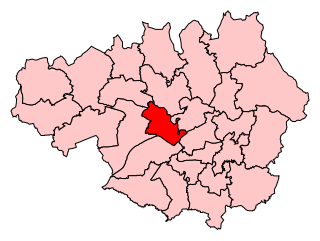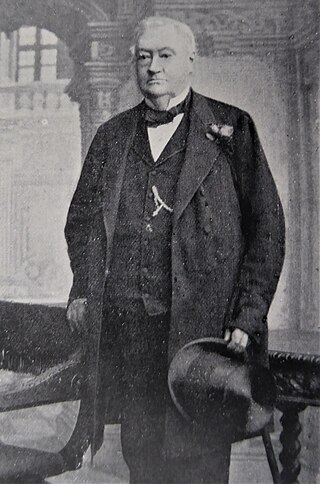
Salford, also known as the City of Salford, is a metropolitan borough with city status in Greater Manchester, England. The borough is named after its main settlement, Salford, but covers a larger area which includes the towns of Eccles, Swinton, Walkden and Pendlebury. The borough had a population of 278,064 in 2022, and is administered from the Salford Civic Centre in Swinton.

Worsley is a village in the City of Salford, Greater Manchester, England, which in 2014 had a population of 10,090. It lies along Worsley Brook, 6 miles (9.7 km) west of Manchester.

Salford Museum and Art Gallery, in Peel Park, Salford, Greater Manchester, opened to the public in November 1850 as the Royal Museum and Public Library. The gallery and museum are devoted to the history of Salford and Victorian art and architecture.

Pendlebury is a town in the City of Salford, Greater Manchester, England. The population at the 2011 Census was 13,069. It lies 4 miles (6 km) north-west of Manchester, 3 miles (5 km) north-west of Salford and 6 miles (10 km) south-east of Bolton.

Eccles is a market town in the City of Salford in Greater Manchester, England, 3 miles (4.8 km) west of Salford and 4 miles (6.4 km) west of Manchester, split by the M602 motorway and bordered by the Manchester Ship Canal to the south. The town is famous for the Eccles cake.

Salford is a borough constituency in Greater Manchester represented in the House of Commons of the Parliament of the United Kingdom. It elects one Member of Parliament (MP) by the first past the post system of election. The constituency was re-established for the 2024 general election and is represented by Rebecca Long-Bailey of the Labour Party until she was suspended and had the whip removed on 23 July 2024, as a result of voting to scrap the two child benefit cap.

Pendleton is an inner-city suburb and district of Salford, Greater Manchester, England. The A6 dual carriageway skirts the east of the district. Historically in Lancashire, Pendleton experienced rapid urbanisation during the Industrial Revolution.

Salford and Eccles was a constituency in the House of Commons of the UK Parliament. For its entire creation since 2010, it has been represented by members of the Labour Party.

Salford was, from 1844 to 1974, a local government district in the county of Lancashire in the northwest of England, covering the city of Salford. It was granted city status in 1926.
Seedley is an inner city suburb of Salford, Greater Manchester, England.
Irlams o' th' Height is a suburb of Salford, Greater Manchester, England, on top of the Irwell Valley, on higher ground than Pendleton, hence the name. The first part of the name derives from the Irlam family that ran the Pack Horse Inn in the 17th and 18th centuries.

Buile Hill Academy is a coeducational state-funded secondary school for 11-16 year olds in Pendleton, Salford, England. It opened in 1973 on the site of Salford Grammar School, and is designated a specialist school for visual arts. The school became an academy in 2016, and was taken over by the Northern Education Trust in 2024.

Thomas Bayley Potter DL, JP was an English merchant in Manchester and Liberal Party politician.

Weaste is an inner-city suburb of Salford, Greater Manchester, England. In 2014, Weaste and Seedley ward had a population of 12,616.
Sir John Potter was a Liberal Party politician in the United Kingdom.

Peel Park is a public urban park in Salford, Greater Manchester, England, located on the flood plain of the River Irwell below Salford Crescent and adjacent to the University of Salford. It was the first of three public parks to be opened on 22 August 1846, for the people of Manchester and Salford, paid for by public subscription. The park was the main public venue for the 1851 royal visit of Queen Victoria to Manchester and Salford and has been the subject of a number of paintings by the Salford artist, L.S. Lowry.

Sir Thomas Potter was an English industrialist and Liberal politician, and the first Mayor of Manchester.

Richard Potter (1778–1842) was a radical non-conformist Liberal Party MP for Wigan, and a founding member of the Little Circle which was key in gaining the Reform Act 1832.
Langworthy is an area of Salford, Greater Manchester. Weaste lies to the west of Langworthy and Pendleton to the east. In 2001 the population of Langworthy was 7,104, increasing to 12,935 at the 2011 Census. It was named after Edward Ryley Langworthy, a former mayor of Salford.

















